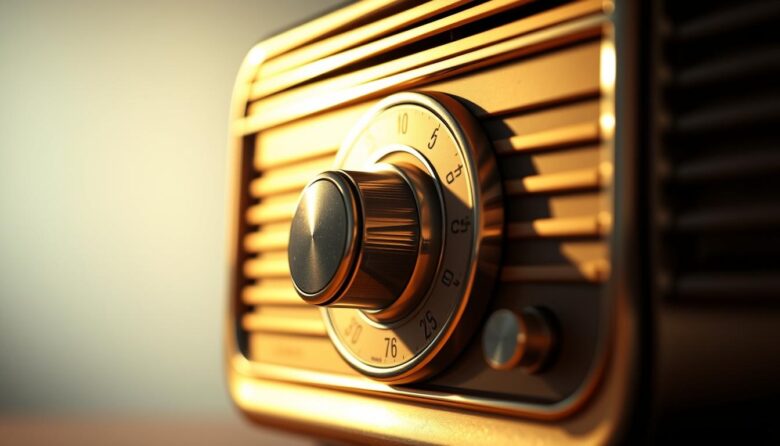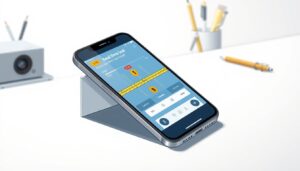Staying connected to news, music, and culture doesn’t always require an internet connection. Traditional broadcast methods still provide reliable access to content through electromagnetic waves, even when cellular networks fail. This guide focuses on manual frequency discovery, a skill that remains vital for emergencies, rural communities, and conserving mobile data.
While apps like Simple Radio offer access to over 75,000 global stations, they depend on consistent connectivity. Understanding how to navigate offline broadcasts ensures uninterrupted access to weather alerts, traffic updates, and cultural programming. We’ll clarify the differences between streaming services and physical tuning methods to eliminate common confusion.
You’ll learn about device compatibility, signal ranges, and why AM/FM transmissions excel in remote areas. For example, during power outages or natural disasters, battery-powered receivers often become lifelines. We’ll also explore how stations like NPR and ESPN allocate specific frequencies to avoid interference.
This section introduces the science behind radio wave transmission and legal regulations governing public airwaves. By the end, you’ll know how to maximize your receiver’s capabilities while respecting spectrum laws. Let’s begin building your technical knowledge for smarter, self-reliant listening.
Understanding the World of Local Radio
The airwaves host a variety of transmission methods, each with distinct technical foundations. FM and AM broadcasts use electromagnetic waves to deliver content, while online streaming relies on internet connectivity. Knowing how these systems work helps you optimize your listening experience.
What Sets FM, AM, and Online Radio Apart
FM radio uses frequency modulation, adjusting wave frequencies to produce clear sound ideal for music. AM radio relies on amplitude modulation, which prioritizes range over audio quality—perfect for talk shows and news. Online platforms like Simple Radio require data but offer global access to thousands of live stations.
Terrestrial signals excel in remote areas without cellular networks. For example, FM often delivers crisp audio for music radio enthusiasts, while AM reaches farther during emergencies. Streaming services demand steady internet, consuming battery and data.
Offline vs. Streamed Radio Experiences
Traditional broadcasts work without apps or subscriptions, making them reliable during power outages. Devices like battery-powered receivers tap into radio station signals freely. In contrast, streamed content depends on Wi-Fi or mobile networks, limiting accessibility in rural zones.
Choosing between methods depends on your needs. Offline listening conserves data and works anywhere signals travel. Streaming suits urban areas with strong connectivity, offering niche genres and on-demand shows through services like Simple Radio.
Preparing for Manual Radio Tuning
Effective manual frequency discovery begins with proper equipment selection and setup. While modern streaming apps dominate urban listening, physical tuning remains indispensable for emergencies and data-free access. This process demands specific hardware and strategic device choices to ensure reliable signal capture.
Essential Tools and Equipment
FM radio receiver chips form the foundation of smartphone-based tuning. Many Android devices include these dormant components, activated through specialized apps like RadioFM. Wired headphones become critical accessories, doubling as antennas for signal reception.
Dedicated portable radios often outperform smartphones in reception quality. Their telescoping antennas and manual dials simplify adjustments without app interfaces. Always verify battery levels and antenna connections before tuning attempts.
Choosing the Right Device for Your Needs
Prioritize devices with extended frequency range coverage and intuitive manual controls. Smartphones with FM chips work for casual users, while outdoor enthusiasts benefit from rugged radios with enhanced signal sensitivity.
Check your phone’s specifications before relying on it for critical listening. Newer models often omit FM capabilities, forcing users toward streaming apps that consume data. For consistent performance, consider investing in a purpose-built radio tuner with analog dials and weather band support.
How to find local radio channels offline
Discovering frequencies manually combines technical understanding with hands-on experimentation. While apps simplify tuning, knowing how to navigate the FM spectrum ensures access to vital information when connectivity falters. This process relies on environmental awareness and strategic device handling.
Spectrum Navigation Fundamentals
FM broadcasts in the U.S. occupy frequencies between 88.1 and 107.9 MHz. Start at the lower end of this range, slowly rotating your device’s dial while listening for clear signals. Urban areas typically host more stations broadcasting news, sports, and music genres, while rural zones may have stronger but fewer options.
Evening hours often improve reception due to atmospheric changes. Position your device near windows and straighten headphone wires to enhance antenna performance. Note recurring station IDs like call signs or jingles to verify authentic broadcasts.
Practical Tuning Strategies
Apps like RadioFM and NextRadio transform smartphones into capable receivers when using wired headphones. Enable FM-only mode to filter out internet-dependent streams. For analog devices, document discovered frequencies in a notebook for quick reference during emergencies.
Rotate your body slowly while holding the device—this “body shielding” technique sometimes minimizes interference from buildings or electronics. Music enthusiasts should focus on higher FM frequencies where stations prioritize audio quality over transmission range.
Identifying the Right Equipment and Apps
The foundation of reliable radio access lies in hardware compatibility and smart software choices. Not all devices support traditional tuning methods, making equipment verification crucial before attempting manual frequency discovery.
FM Receiver Chips and Wired Headphones
Android smartphones often hide a secret weapon: dormant FM receiver chips. Brands like Samsung and LG historically included this feature, though newer models may lack it. Check your device’s specifications or use apps like RadioFM to activate this capability.
iPhone users face hardware limitations—Apple devices exclude FM chips entirely. Streaming alternatives like the Simple Radio app become essential for accessing 75,000+ stations music globally. This platform uses internet connectivity but requires consistent data access.
Wired headphones dramatically improve reception quality when using FM-enabled devices. Longer cables act as superior antennas compared to wireless options. For optimal results, pair headphones with apps like NextRadio that transform compatible Android phones into portable receivers.
Alternative equipment includes pocket-sized analog tuners and USB-connected dongles. Test all tools in different locations to ensure consistent performance. Devices with manual dials often outperform app-based solutions in areas with weak signals.
Step-by-Step Guide to Tuning In Manually
Mastering manual frequency adjustments transforms your device into a versatile tool for accessing broadcasts. Whether using specialized apps or analog receivers, precise setup and scanning techniques unlock crystal-clear audio.
Setting Up and Configuring Your Device
Begin by installing trusted apps like RadioFM or NextRadio from the Google Play Store. These platforms activate hidden radio tuner capabilities in compatible Android devices. Always connect wired headphones before launching the app—their cables act as antennas for stronger signal capture.
Navigate to settings and enable FM-only mode to disable data usage. This ensures genuine offline reception instead of streaming. Position your device near windows or elevated surfaces to minimize obstructions during initial setup.
Scanning and Selecting the Optimal Frequency
Start scanning at 88.1 MHz, slowly moving upward while listening for clear signals. Urban areas often cluster stations between 92.5 and 106.7 MHz, while rural zones may require patience to locate weaker broadcasts.
Balance signal strength with audio quality by making micro-adjustments to eliminate static. Save discovered frequencies using your app’s memory function to create a library of favorite radio stations. This feature proves invaluable during emergencies when quick access to weather alerts or news updates matters most.
For music enthusiasts, prioritize higher frequencies where stations often deliver better sound fidelity. Test different locations in your home or vehicle—sometimes moving just a few feet improves reception dramatically.
Expert Tips for Optimizing Your Radio Experience
Enhancing broadcast clarity requires balancing technical knowledge with environmental awareness. Strategic adjustments to your setup can transform faint signals into vibrant audio, whether you’re enjoying music radio genres or emergency updates.
Finding Clear Signals and Avoiding Interference
Environmental factors dramatically affect reception. Metal structures and thick walls weaken signals, while elevated positions near windows often improve clarity. Experiment with headphone wire placement—straightened cables act as superior antennas for FM-enabled devices.
Identify interference sources like microwaves or LED lights that create static. Use apps like Simple Radio to save favorite radio presets in interference-free zones. Their tuner technology minimizes drops, letting you reconnect to saved radio stations instantly.
Timing matters—atmospheric changes after sunset often strengthen AM signals. Note when your preferred station broadcasts strongest. Combine this with location scouting: concrete buildings may require moving 10-15 feet to find “sweet spots” with clear audio.
Weather patterns influence signal travel. Storm fronts sometimes boost long-distance AM reception, while humidity enhances FM range. Advanced users employ signal meters to distinguish local broadcasts from distant ones using skip propagation techniques.
Simple Radio users abroad can maintain hometown connections through its global directory. The app’s one-tap access to saved stations simplifies rediscovering cultural programming or breaking news during travels.
Troubleshooting Common Tuning Issues
Even the best equipment encounters challenges when capturing broadcasts. Identifying root causes quickly saves time and frustration while improving your listening reliability.
Dealing with Signal Drops and Interference
Signal interruptions often stem from competing electronics or physical barriers. Microwaves, LED bulbs, and Bluetooth devices emit waves that clash with FM frequencies. Move away from these sources or switch them off temporarily.
Test different headphone positions—straightened wires often catch stronger signals. Apps like Simple Radio automatically reconnect to saved stations after drops. Their developers refine algorithms using feedback sent to simple@streema.com.
Adjustments for Different Environments
Urban areas require strategic positioning near windows to bypass steel-reinforced walls. Rural listeners may need portable antennas to boost weak transmissions. Always check battery levels before extended outdoor sessions.
Update your tuning app regularly to fix bugs affecting FM chip performance. Clear cached data if stations stop loading properly. For persistent issues, try alternative wired headphones or consult device manuals for hardware specifications.
Simple Radio users enjoy minimal data consumption compared to streaming platforms. The app’s efficient design preserves battery life while delivering diverse music genres and news stations globally.
Leveraging Advanced Mobile Radio Features
Modern radio apps transform smartphones into versatile entertainment hubs with tools that adapt to daily routines. Beyond basic tuning, these platforms offer personalization features that elevate convenience and conserve resources. Let’s explore how to maximize functionality through intelligent settings.
Using Sleep Timers and Alarm Clocks Effectively
The sleep timer in apps like Simple Radio automatically stops playback after set durations. This prevents overnight battery drain while letting users drift off to music or podcasts. Pair it with the alarm clock feature to wake up to your preferred station instead of jarring tones.
Set morning alarms to activate specific stations, ensuring fresh content daily. This approach blends routine with discovery—you might catch breaking news or a new song first thing. Both features work offline in FM mode, ideal for areas with spotty internet.
Customizing App Themes and Settings
Adapt your app’s interface with light or dark themes that sync with device settings. Simple Radio’s theme engine reduces eye strain during nighttime listening. Create voice shortcuts through Siri for instant access to saved stations without opening the app.
Organize frequently used broadcasts into favorites lists for one-tap access. The recent stations menu remembers your exploration history, eliminating repetitive searches. Adjust audio quality presets and notification preferences to match your listening environment.
Privacy and Data Considerations in Radio Tuning
Modern tuning apps balance convenience with data collection practices. Users should understand how their information gets handled when accessing broadcasts through digital platforms.
Understanding Data Usage and Identifiers
Apps like RadioFM may collect location data, search history, and device identifiers. This data may link to user identities for personalized ads or analytics. Check each service’s privacy policy to confirm what gets shared with third-party networks.
Simple Radio’s privacy practices focus on usage metrics rather than personal details. However, identifiers like advertising IDs can track activity across unrelated websites. Always review permissions before granting access to contacts or diagnostics.
Turn off unnecessary app features to limit data exposure. For offline tuning, disable internet connectivity in your device settings. This prevents background data may collection while preserving battery life during manual frequency searches.



